|
|
| |
|
|
Invited Speakers
Physics in High-Tech Industry: Judi Hess (CEO at CopperLeaf Technologies Inc)
 Judi is our After-Dinner Speaker at the Banquet
Judi is our After-Dinner Speaker at the Banquet
Title: "Stemming the Tide: Improving Outcomes for Women in STEM"
Abstract: Although in-roads are being made for women in STEM studies and professions,
women are still under-represented in these fields as compared with men, especially in Physics.
What are the facts? Why is this the case?
What drives these trends and how can we reverse and accelerate the tide?
Find out what you should be doing to drive change by listening to one women’s story
and her recommendations for changing the outcomes for women in STEM fields and why it should matter to you and everyone.
STEM = Science, Technology, Engineering and Mathematics
Short Biography:
Judi took on the role of CEO at CopperLeaf in August 2009. In 1995 she
joined Burnaby-based Creo Inc. from MacDonald Dettwiler and
Associates, beginning as a program manager and rising to become
president in 2002, a position she held until Creo was acquired by
Eastman Kodak for just under $1 Billion USD in 2005. As part of
Eastman Kodak, Judi took on the role of general manager, workflow and
prepress equipment; and vice-president of the graphic communications
group. Two years later, her role was expanded to include management of
a portfolio of software and start-up businesses and she was appointed
a corporate officer and vice-president of Eastman Kodak and the head
of Kodak Canada. (MacDonald Dettwiler, Creo, Kodak are all local high-tech companies which
employ many physicists/engineering physicists).
Judi is currently a member of the Premier's Technology
Council of British Columbia and a member of the board of Acetech.
Originally from Toronto, Judi and her family live in Vancouver. She
holds an honours bachelor's degree in mathematics from the University
of Waterloo, and is an avid downhill skier.
Astrophysics: Samar Safi-Harb (University of Manitoba)
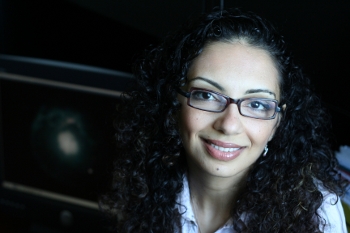 Title: "Supernova Remnants as Cosmic Laboratories for Probing our Origins and Studying the Physics of Shocks and the Extreme" Title: "Supernova Remnants as Cosmic Laboratories for Probing our Origins and Studying the Physics of Shocks and the Extreme"
Abstract: Supernova explosions are among the most energetic explosions in the Universe. They enrich the interstellar medium with the elements we are made of, accelerate cosmic rays to extremely high energies, and (sometimes) leave behind neutron stars: highly compact and hot stars whose central densities are comparable to nuclear densities and whose magnetic fields can exceed the Earth's a trillion-fold or even much more! As such, Supernova Remnants (SNRs) serve as a laboratory to explore our origins and the physics of the extreme that is unattainable on Earth. I will present an overview of the field with focus on X-ray observations. In particular, I will share the excitement emerging from the discovery of a growing diversity of neutron stars and their wind nebulae, and show the wealth of physics we can learn from X-ray imaging and spectroscopic studies of the remnants. I will conclude with an outlook to the future of the field with the next generation of X-ray missions, including Astro-H.
Short Biography:
Prof. Samar Safi-Harb is an astrophysicist who researches the high-energy phenomena associated with supernova remnants and neutron stars. After receiving her undergraduate degree from the American University of Beirut, she spent about 10 years in the United States where she did her Masters and PhD studies at the University of Wisconsin, Madison followed by a US/National Research Council Fellowship at NASA's Goddard Space Flight Center in Maryland.
She joined the University of Manitoba as an NSERC University Faculty Award Fellow, where she established a research program in high-energy astrophysics and also played a major role in the development of the astronomy program. She has supervised a number of students at the undergraduate and graduate levels, the majority being women.
She currently serves as a board director for the Canadian Astronomical Society. Recently she was selected to join the international science working group for the Japanese-led X-ray mission, Astro-H, slated for launch in 2014.
Condensed Matter Physics: Patricia Mooney (Simon Frasier University)
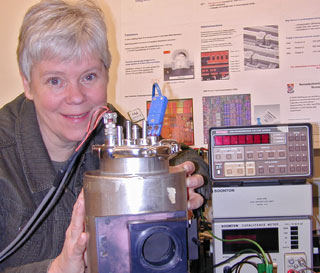 Title: "Semiconductors: New Materials and New Applications of Old Materials" Title: "Semiconductors: New Materials and New Applications of Old Materials"
Abstract: Semiconductor materials are the basis for the computing and telecommunications technologies that we enjoy today.
Over time new materials with unexpected properties and new fabrication techniques open doors to new technologies.
I will describe how my career in physics has evolved, discuss a few key advances in semiconductor technologies, and briefly discuss several on-going research projects in our laboratory.
Short Biography:
Patricia M. Mooney is Professor and Tier 1 Canada Research Chair in Semiconductor Physics at Simon Fraser University.
Prior to joining SFU Physics in 2005, she was a Research Staff Member at the IBM T.J. Watson Research Center, Yorktown Heights,
NY for 25 years. Dr. Mooney is the author of over 180 publications,
and also has 18 issued patents. She received two outstanding Technical Achievement Awards from the IBM Corporation in
addition to several patent awards.
Dr. Mooney is a Fellow of both the American Physical Society (APS) and the American Association for the Advancement of Science (AAAS).
She has served on numerous boards and councils for the American Institute of Physics,
NSERC Grants, APS Council, APS Executive Board and the APS Budget Committee.
and has served on many APS Committees.
She has been a member of the editorial board of Physical Review B, Applied Physics Letters/Journal of Applied Physics
and the Journal of Materials Science: Materials in Electronics.
She was recently a member of the International Advisory Board of the International Conference on Defects in Semiconductors.
Quantum Computing: Anne Broadbent (Institute for Quantum Computing)
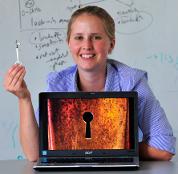 Title: "Making and breaking codes - a tale of quantum cryptology" Title: "Making and breaking codes - a tale of quantum cryptology"
Abstract: For centuries, the quest for secret communications has been an ongoing
battle between
codemakers and codebreakers. While quantum computers could
completely break the current technology used to secure Internet
transactions, quantum key distribution provides confidential
communications based only on the laws of quantum mechanics. Have the
codemakers finally won the final battle? Tune it to find out.
Short Biography: Anne Broadbent is a post-doctoral researcher at the Institute for Quantum Computing at the University of Waterloo and holds a Junior Fellowship from the Canadian Institute for Advanced Research (CIFAR). In 2011, she completed an NSERC Postdoctoral Fellowship, also at the Institute for Quantum Computing. She received her Ph.D. and M.Sc. from the
Université de Montréal and holds a B.Math from the University of Waterloo. Anne has been recognized with numerous awards and honours during her academic career, including the 2009 NSERC Doctoral Prize and the 2010 John Charles Polanyi Prize. Anne is currently researching a
variety of quantum protocols, with the goal of devising and implementing secure and efficient methods for information processing within a network of quantum computers, as well as giving us a better understanding of the physical world as predicted by quantum mechanics.
Particle Physics: Anadi Canepa (TRIUMF)
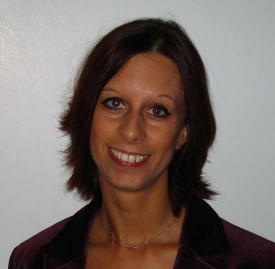 Title: "Our window on the Universe: the Large Hadron Collider" Title: "Our window on the Universe: the Large Hadron Collider"
Abstract: What is the Universe made of? What is the nature of matter? Why there is more matter than antimatter? Are there extra dimensions of space-time?
The Large Hadron Collider by recreating the same conditions as those soon after the Big Bang has the potential to answer these questions.
We live in a time when the exploration of fundamental particles and their interactions is leading toward a revolutionary new understanding of the universe.
Short Biography: Dr. Canepa obtained her Ph.D. in experimental particle physics from Purdue University (IN, USA) and her 'laurea' from the University of Padova (Italy).
Dr. Canepa is a Research Scientist at TRIUMF, Canada's national laboratory for particle and nuclear physics. Her research is on elementary particle physics; in particular she is specialized in analysis of proton-antiproton collision data produced by the Tevatron collider at Fermilab (Batavia IL, USA) and in proton-proton collision data produced by the Large Hadron Collider of CERN (Geneva, Switzerland).
She is co-author of more than 350 peer-reviewed papers and main author of 17. She is also the author of "Search for Supersymmetry in proton-antiproton collisions: Hunt for chargino and neutralino at CDF", published by VDM Verlag Dr. Mller (February 11, 2009). She is a member of the CDF Collaboration (600 members) and of the ATLAS Collaboration (3000 members).
Gender and Stereotypes: Toni Schmader (University of British Columbia)
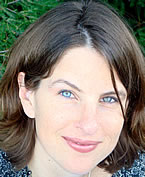 Title: "How Stereotypes Stifle Performance: Identifying the Problem and Finding Solutions" Title: "How Stereotypes Stifle Performance: Identifying the Problem and Finding Solutions"
Abstract: Despite the dismantling of institutionalized barriers to women's advancement in Science, Technology, Engineering, and Math (STEM), gender disparities remain.
What is often unacknowledged is the way that environments themselves cue our cultural stereotypes that associate physics and math more with men than with women.
In this talk, I will summarize some of key discoveries from the past 15 years of social psychology that have shown the existence of implicitly held stereotypes and the effect they can have on women's performance in male-dominated fields.
I will also highlight a few of the interventions that have been most effective at combating these effects.
Short Biography: Toni Schmader is a Canada Research Chair in Social Psychology and Professor at UBC.
She received her Ph.D. in Social Psychology from the University of California, Santa Barbara in 1999.
She spent 10 years on the faculty at the University of Arizona and has held a visiting position at Harvard University.
Her research has examined how stereotypes undermine the interest and success of women in science, technology, engineering, and math.
In addition, her research examines the interplay between self and social identity, particularly when one's social identity is accorded lower status or is targeted by negative stereotypes.
In exploring these issues, her research draws upon and extends existing work on social stigma, social justice, social cognition, intergroup emotion, self-esteem, and motivation and performance.
Women in Science, Technology, Engineering and Math: Anja Lanz (Autopro Automation Consultants)
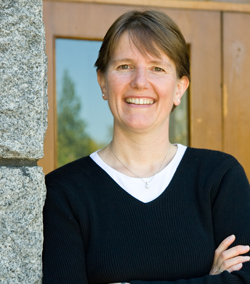 Title: Don't Let Statistics Stop you Title: Don't Let Statistics Stop you
Abstract: Do you feel discouraged if the statistics are not in your favour? It can happen some day that you find yourself in the minority. What do you do? What are your options to succeed and thrive despite the setbacks?
Anja has plenty of experience in addressing these issues.
Short Biography:
Anja Lanz is an alumna of the Engineering Physics Program at UBC, a Junior Engineer at Autopro Automation Consultants, and the President of Women in Engineering (Vancouver Region).
Anja has spearheaded the creation of theWomen in Engineering Physics Network, was a founding member of Women in Engineering at UBC, was the chair of the first-ever Women in Engineering Symposium in British Columbia,
and has been president of Women in Engineering (Vancouver Region) for 4 years.
Anja also serves as a mentor in the YWCA Connect to Success program.
She is an active member in the community empowering women, and she volunteers as a
mentor in several agencies, helping women move through challenging times.
|
|
|
|